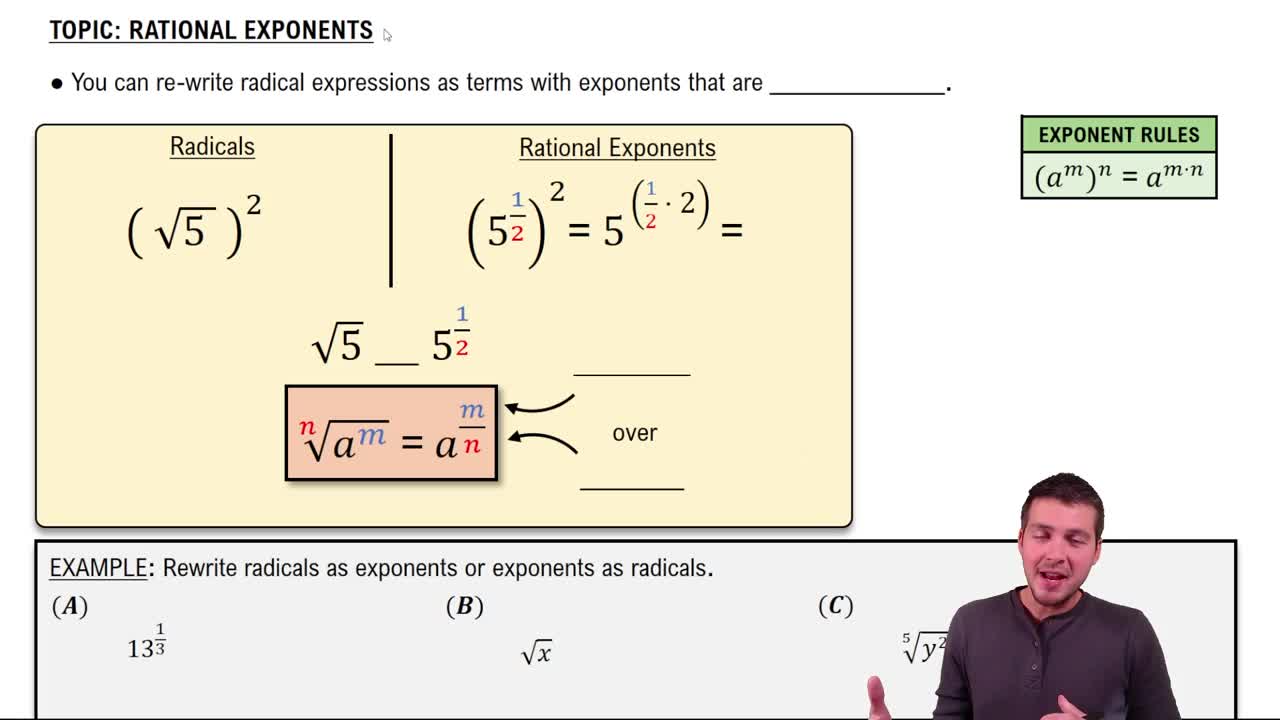Here are the essential concepts you must grasp in order to answer the question correctly.
Negative Exponents
A negative exponent indicates the reciprocal of the base raised to the absolute value of the exponent. For example, a⁻n = 1/aⁿ. This concept is crucial for rewriting expressions with negative exponents into forms that use only positive exponents.
Recommended video:
Reciprocal
The reciprocal of a number is 1 divided by that number. In the context of exponents, when converting a negative exponent, the base is placed in the denominator of a fraction. For instance, 3⁻² becomes 1/3², which simplifies the expression to a positive exponent.
Recommended video:
Parallel & Perpendicular Lines
Simplification of Exponents
Simplification involves reducing an expression to its simplest form. This can include combining like terms, applying exponent rules, and reducing fractions. In the case of 3⁻², after converting to a positive exponent, further simplification can yield a numerical value, such as 1/9.
Recommended video:
 Verified step by step guidance
Verified step by step guidance Verified Solution
Verified Solution

